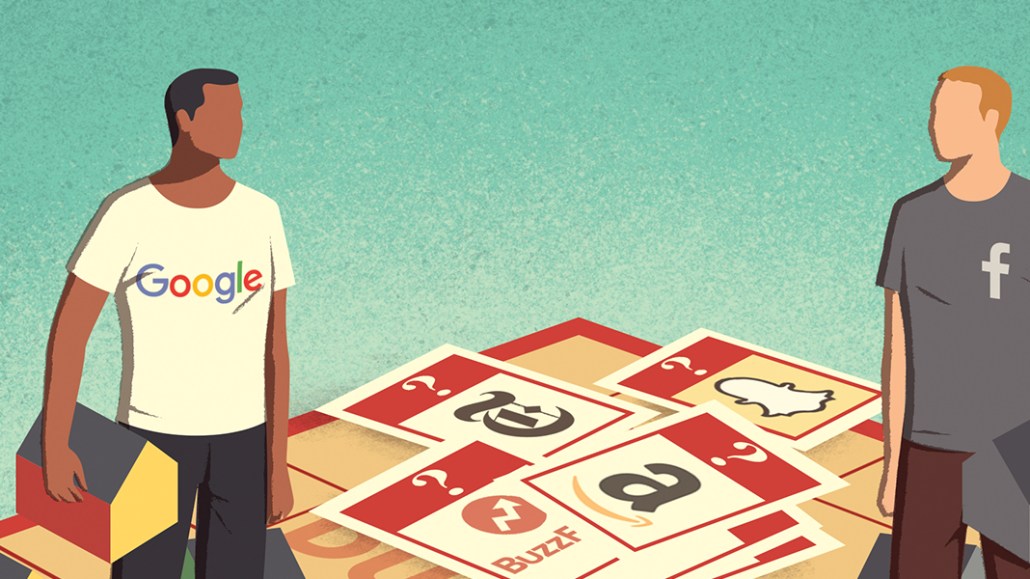Save 50% on a 3-month Digiday+ membership. Ends Dec 5.
‘It will mean we buy less on social media’: Unilever will no longer target young kids with ads

Unilever has decided it will no longer target kids younger than 13 with advertising. This move, announced yesterday, will result in the company now purchasing fewer ads on social media platforms, according to one of its senior marketers, Ian Maskell.
The new media strategy stems from Unilever’s release of a set of new marketing guidelines amid widespread concerns about childhood obesity and the role advertisers have played in promoting unhealthy lifestyles. Unilever will also steer clear of using influencers to target this younger age group. Previously Unilever had marketed to kids ages 6 to 12 via traditional and social media but only for food products that met its “highest nutrition standards.” Now, the advertiser’s age restrictions for kids are more in line with those of the online platforms it buys ads from. The new approach will begin with the marketing of Unilever’s ice cream business, with Wall’s being its first global ice cream brand to carry the “responsibly made for kids” promise.
Of all Unilever products, Wall’s ice creams are the ones with the highest allocation for ads that target kids, said Maskell, who serves as global brand vp for the Wall’s ice cream group of product. The media strategy for these ice cream products will be overhauled this year as a result, he told Digiday. And the media strategy for other Unilever brands could be changed as well; to date, the marketing for most of its other brands, including Magnum and Cornetto ice creams, has targeted the person who buys the product not the one who consumes it, Maskell noted.
In markets like Turkey and South Asia, where Unilever still purchases a lot of social media ads aimed at kids, some revised media plans will reduce the number of ads purchased. Unilever’s marketers will also rethink where they place their ads to limit the chances that the advertising inadvertently targets children. Media agencies will be instructed to avoid running ads online where kids younger than 13 represent more than 25% of the audience. In the past, the guideline was set at 35% of the audience.
“It will effectively mean we buy less on social media,” Maskell observed.
The messages in the ads will also change, Maskell said. The advertising will now focus more on how to give kids snacks in a responsible manner, he said. Nutrition bloggers will be used in place of influencers who were younger than 13 or who targeted that audience.
Technically, Unilever should not have to implement strict measures to avoid targeting kids online. The largest online ad platforms such as YouTube and Facebook bar children who are younger than 13 from using their services since they collect and trade user data. Regulations in major markets like Europe and North America prohibit data collection from children.
Ad position: web_incontent_pos1
The likes of YouTube and Facebook have made millions of dollars from content on their platform aimed at younger audiences. For example, YouTube makes $500 million to $750 million a year from kids content, according to research published by Loop Ventures in 2019.
“The only way to make sure that your ads are not targeting kids is if you understand what content those ads are running on,” said Christian Dankl, chairman of the online video advertising platform company Precise.TV.
“YouTube seems to be the easiest platform for advertisers to use so as to avoid targeting kids. Since last month, if a YouTube video is labeled “made for kids,” then it should have no behaviourally targeted advertising at all, given the only way to buy kids content is by using contextual targeting.
Unilever’s strict guidelines could also affect potential ad revenue for platforms like TikTok and Snapchat; both are known to attract young audiences.
“At the moment Unilever as a company doesn’t advertise on TikTok outside of China, and so we’ve not run any ads for our ice creams there,” Maskell said. “We know that there are children on Snapchat under the age of 13, but none of our communications on the platform are targeting that age.”
Ad position: web_incontent_pos2
He added, “We can’t stop children who are under the age of 13 from looking at our ads on the [Snapchat] app, but that’s not our intention. It’s the reality of the world.”
While TV ads for kids are strictly regulated, the rules for ads online remain in a state of flux.
“We’re seeing the negative impact [that] social platforms can have on kids, so making an attempt to protect young people from unsuitable content is a step in the right direction,” said Coris Leachman, director at advertising agency Impero.
More in Marketing

Ulta, Best Buy and Adidas dominate AI holiday shopping mentions
The brands that are seeing the biggest boost from this shift in consumer behavior are some of the biggest retailers.

U.K. retailer Boots leads brand efforts to invest in ad creative’s data layer
For media dollars to make an impact, brands need ad creative that actually hits. More CMOs are investing in pre- and post-flight measurement.

‘AI is permeating everything we do’: How Guitar Center developed 2 AI tools this year
This summer, the company launched a chatbot called Rig Advisor to help customers find the right instruments and products.
Ad position: web_bfu




